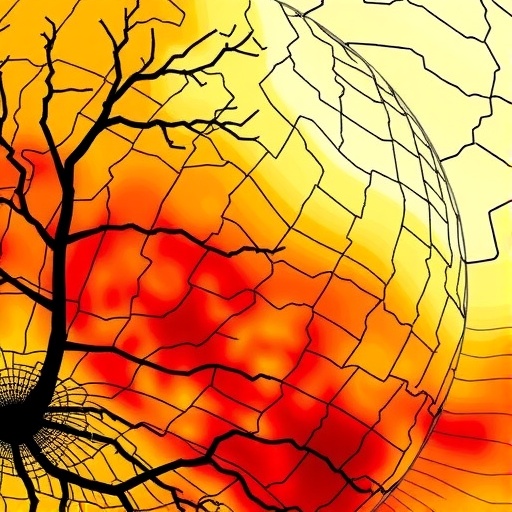
Global Temperatures Propel Unprecedented Surge in Drought Severity Across Continents
In a groundbreaking new study published in Nature, researchers have unveiled compelling evidence linking rising global temperatures to an acceleration in drought severity worldwide. Utilizing sophisticated drought indices that integrate atmospheric evaporative demand and precipitation data, this research reveals an increasingly arid planet, warning of dire consequences for ecosystems, agriculture, and human water security. The findings are underpinned by state-of-the-art climate datasets and rigorous statistical analyses, painting a comprehensive picture of how warming climates exacerbate dry spells with growing intensity and duration.
At the heart of this study lies the Standardized Precipitation Evapotranspiration Index (SPEI), a drought monitoring tool that balances the competing influences of precipitation and atmospheric evaporative demand (AED). Unlike traditional metrics, SPEI accounts for the drying capacity of the atmosphere, making it a more sensitive barometer of drought under changing climatic conditions. By subtracting AED from precipitation and standardizing the result through a log-logistic probability distribution, SPEI offers a robust measure of drought severity across diverse regions and timescales, capturing both precipitation deficits and increased evaporative pressures driven by warming.
.adsslot_Wrjqauyw9c{width:728px !important;height:90px !important;}
@media(max-width:1199px){ .adsslot_Wrjqauyw9c{width:468px !important;height:60px !important;}
}
@media(max-width:767px){ .adsslot_Wrjqauyw9c{width:320px !important;height:50px !important;}
}
ADVERTISEMENT
The research team generated four high-resolution SPEI indices by combining two leading precipitation datasets—MSWEP and CHIRPS—with two AED datasets, GLEAM and hPET. These datasets offer complementary perspectives, derived from satellite observations, ground stations, and reanalysis products, thus mitigating biases inherent in any single source. Producing indices at a fine spatial resolution of 0.05°, the researchers created a nuanced global drought assessment covering more than four decades, from 1981 to 2022. An ensemble dataset harmonized these sources, providing a more resilient representation of drought variability, especially in mid- and low-latitude zones.
Notably, for higher latitudes above 50°N, where precipitation and evaporative demand dynamics differ, the study supplemented analyses by focusing on MSWEP-derived datasets due to the limited availability of CHIRPS data in these regions. The comparatively modest values and variability of AED in colder climates result in a lesser influence on the SPEI calculations, suggesting that drought dynamics at high latitudes may be dominated more by precipitation trends than by atmospheric dryness. This spatially delineated approach enhances confidence in the spatial fidelity of drought trends across the planet’s climate zones.
Additional indices facilitated disaggregating the respective roles of precipitation and AED in shaping drought conditions. By examining scenarios with climatological averages of precipitation or AED held constant, the research quantified the extent to which atmospheric drying, amplified by warming, drives drought severity independent of rainfall deficits. This methodological innovation sheds light on the growing influence of increasing evaporative demand as a driver of drought, an aspect often overshadowed by a singular focus on precipitation patterns in past studies.
To capture broader temporal trends and early signals of shifting drought regimes, the study incorporated coarse-resolution datasets from ERA5 and CRU-TS, covering the periods 1950–2022 and 1901–2022 respectively. These long-term datasets, computed using the Penman–Monteith equation and offering monthly timeseries, provide critical context for understanding historical drought variability and the recent acceleration observed in the satellite era. The inclusion of such extensive records highlights how anthropogenic warming superimposes onto natural climate variability, intensifying drought frequency and persistence.
Droughts in this study are objectively defined with SPEI thresholds: values below −1 signal drought occurrence, while those between −1 and 1 denote near-normal conditions, and values exceeding 1 represent wet events. Using this framework, the researchers scrutinized key drought characteristics—frequency, duration, magnitude, and intensity—across the globe. The magnitude quantifies the cumulative deficit during drought periods, intensity identifies the peak severity, duration measures consecutive months affected, and frequency counts event occurrences. Together, these metrics provide a rich depiction of drought dynamics that goes beyond simplistic binary drought classifications.
Underpinning these analyses are two seminal global precipitation datasets: CHIRPS and MSWEP. CHIRPS combines satellite-derived infrared precipitation estimates with comprehensive ground-station inputs, excelling in drought monitoring and environmental change detection, especially below 50° latitude. MSWEP integrates extensive multi-source precipitation observations—spanning over 77,000 stations—with satellite microwave and reanalysis data, delivering highly accurate and temporally resolved precipitation estimates worldwide. Both datasets have demonstrated superior performance relative to alternatives in capturing daily precipitation extremes, streamflow dynamics, and annual totals, enhancing the credibility of study results.
Complementing precipitation data, the atmospheric evaporative demand component was carefully modeled using two flagship datasets: hPET and GLEAM. The hPET dataset utilizes the FAO-56 Penman–Monteith equation applied to ERA5 climate inputs, offering hourly global AED estimates from 1981 to 2022. In contrast, GLEAM derives potential evapotranspiration using Penman’s original formula calibrated dynamically to ecosystem and meteorological variations. Despite methodological differences, the sets exhibit a strong correlation exceeding 0.9 in most regions, underscoring the robustness of AED estimates crucial for precise SPEI computations.
A deeper dive into the theoretical foundations reveals contrasting methods to estimate AED. The FAO-56 Penman–Monteith equation integrates atmospheric variables including net radiation, wind speed, humidity deficit, and temperature to estimate reference evapotranspiration for standard crop surfaces. This method assumes static surface and aerodynamic conditions, enabling consistent comparisons over time and space. Meanwhile, Penman’s equation, as employed in GLEAM, incorporates dynamic aerodynamic conductance based on evolving local meteorology and vegetation states. Both methods leverage key meteorological parameters—such as vapor pressure deficit and psychrometric constants—to encapsulate the atmospheric demand for moisture, a parameter gaining newfound importance under climate warming.
The study’s trend analyses employ rigorous non-parametric statistical methods: the Mann–Kendall test, which detects significant monotonic trends in SPEI data free from distributional assumptions, and Sen’s slope estimator, providing a robust measure of trend magnitude amid outliers. These tools allow pixel-by-pixel assessment of drought evolution globally, highlighting regions experiencing intensifying dryness or wetness. Importantly, such spatial granularity reveals heterogeneous drought patterns, reflecting complex interactions between climate drivers, geography, and land surface processes.
Collectively, the results reveal a disturbing acceleration in global drought severity over recent decades, driven not only by declines in precipitation in vulnerable regions but also by surging atmospheric evaporative demand linked to rising temperatures. The intensified evaporative pull exacerbates soil moisture deficits, plant stress, and hydrological extremes, compounding the risks to agricultural productivity, water supply, and ecosystem resilience. These findings corroborate and extend prior observations, emphasizing that warming-induced increases in atmospheric dryness must be considered a central component in drought forecasting and mitigation strategies.
As climate models project continued global warming, this study underscores the urgency of integrating AED dynamics into drought risk assessments and water resource management. Traditional drought definitions relying solely on precipitation risk underestimating the compound impacts of atmospheric drying. Policymakers and stakeholders must account for the dual threats posed by shifting precipitation regimes and increasing evapotranspiration, tailoring adaptation measures to the multidimensional nature of future drought challenges.
This research also highlights the invaluable role of satellite-enabled observations and advanced reanalysis datasets in improving drought monitoring systems. By harmonizing multiple data streams and leveraging standardized indices such as SPEI, scientists can detect and attribute drought trends with unprecedented confidence. These advancements facilitate early warning, vulnerability assessments, and targeted interventions, essential for mitigating the socio-economic fallout of mounting drought hazards.
Ultimately, as the planet warms and the hydrological cycle intensifies, the delicate balance between water supply and atmospheric demand is tipping precariously. This landmark study provides critical scientific foundation for understanding this imbalance, signaling that droughts in the twenty-first century will likely be more frequent, longer-lasting, and more severe. Navigating this new normal demands robust climate resilience, globally coordinated strategies, and an unwavering commitment to reducing greenhouse gas emissions to safeguard water security for generations to come.
Subject of Research: Drought severity and its acceleration in response to global warming, assessed through atmospheric evaporative demand and precipitation datasets.
Article Title: Warming accelerates global drought severity
Article References:
Gebrechorkos, S.H., Sheffield, J., Vicente-Serrano, S.M. et al. Warming accelerates global drought severity.
Nature (2025). https://doi.org/10.1038/s41586-025-09047-2
Image Credits: AI Generated
Tags: atmospheric evaporative demand influenceclimate change impact on agricultureconsequences of increased drought intensitydrought monitoring tools and techniquesecosystems affected by global warmingglobal warming effects on droughthigh-resolution climate datasetslong-term drought trends and statisticsprecipitation and drought relationshipsrising temperatures and drought severityStandardized Precipitation Evapotranspiration Indexwater security and climate change



